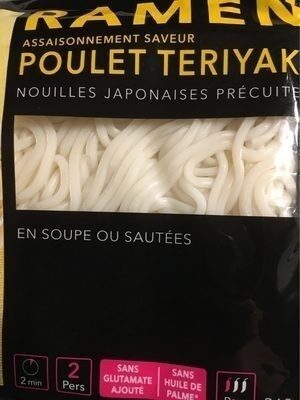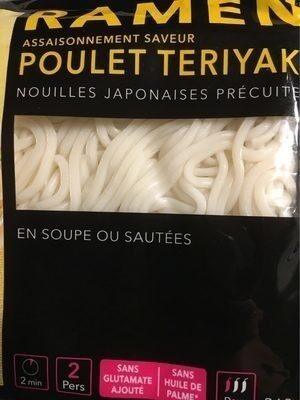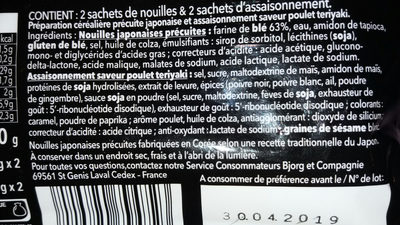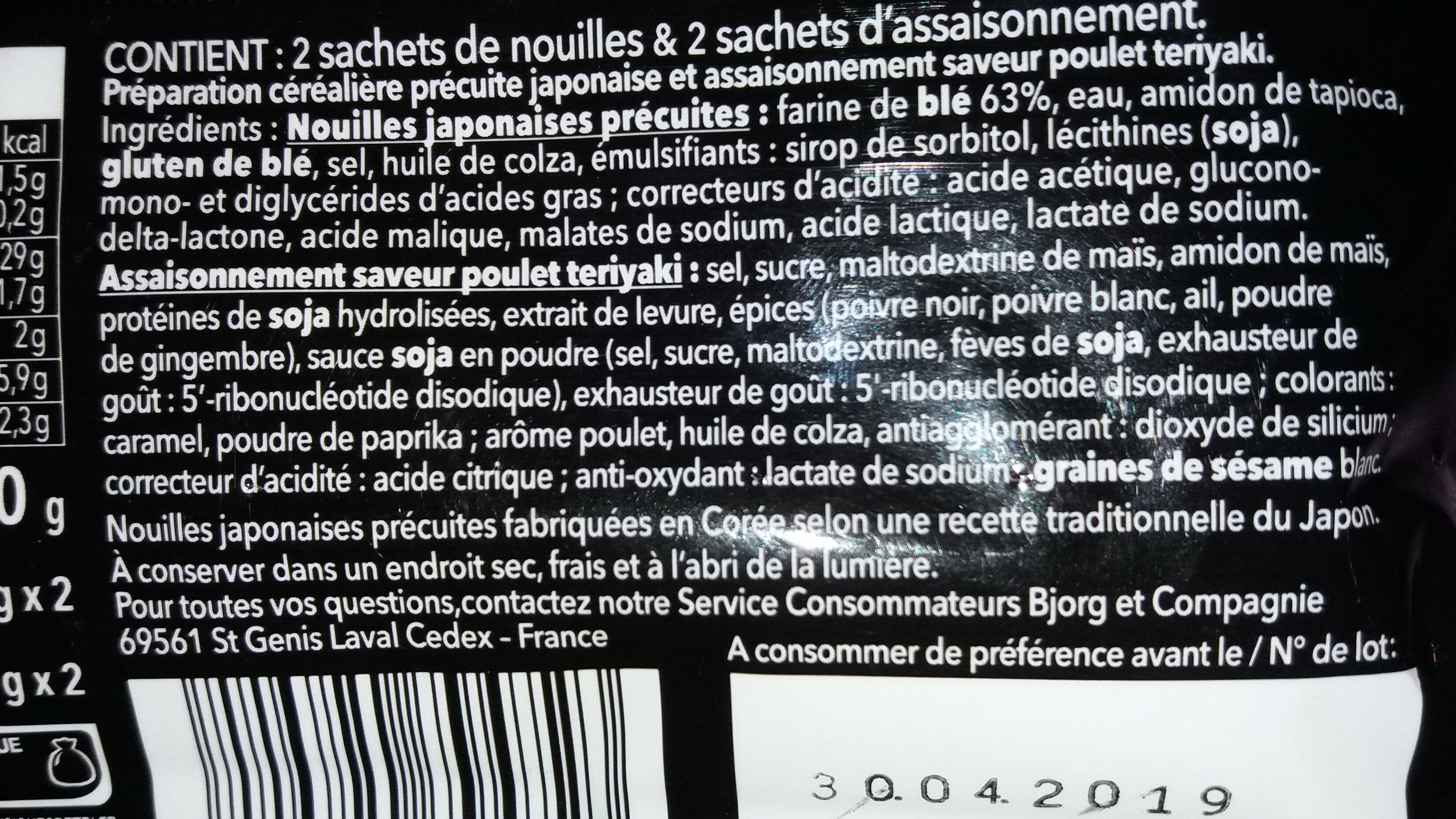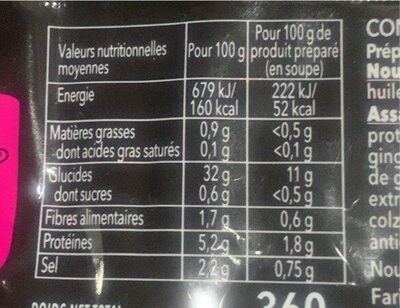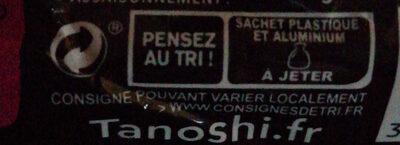Ramen saveur poulet teriyaki - Tanoshi - 360g
This product page is not complete. You can help to complete it by editing it and adding more data from the photos we have, or by taking more photos using the app for Android or iPhone/iPad. Thank you!
×
Barcode: 3229820794723 (EAN / EAN-13)
Quantity: 360g
Packaging: Bag
Brands: Tanoshi
Categories: Plant-based foods and beverages, Plant-based foods, Cereals and potatoes, Cereals and their products, Dried products, Pastas, Noodles, Chinese noodles
Labels, certifications, awards: fr:Tanoshi
Manufacturing or processing places: Corée du Sud
Stores: carrefour.fr
Countries where sold: France
Matching with your preferences
Report a problem
Data sources
Product added on by kiliweb
Last edit of product page on by foodvisor.
Product page also edited by anmoron, driveoff, ferodoh, fgo, gwen0, hikitsune, inf, liloumangedesdorayaki, openfoodfacts-contributors, packbot, quechoisir, roboto-app, tom60chat, yuka.WGF4YkRMMGloZEJXdmMxdTRUM3V4NHQ1MjZHU2ZWNk5EZE1OSWc9PQ, yuka.sY2b0xO6T85zoF3NwEKvlh1kSf7zjSPFKjXRmHSFyoihdJW3SIF16aijCKs, yuka.sY2b0xO6T85zoF3NwEKvlhUbWYXa8yz0Hg7UlWeE6sjRIbzDbNpj2aHYKKs, yuka.sY2b0xO6T85zoF3NwEKvlmUYdNWB_jLJPRjRx3Cn7463BZHKSs1N0qLebqo, yuka.sY2b0xO6T85zoF3NwEKvlndNcIHM_mL8Dyf4pxeG4Y2rMq60S9JI0KvTY6o.
